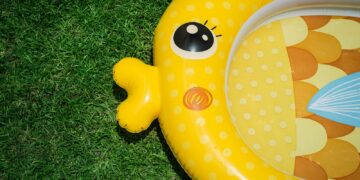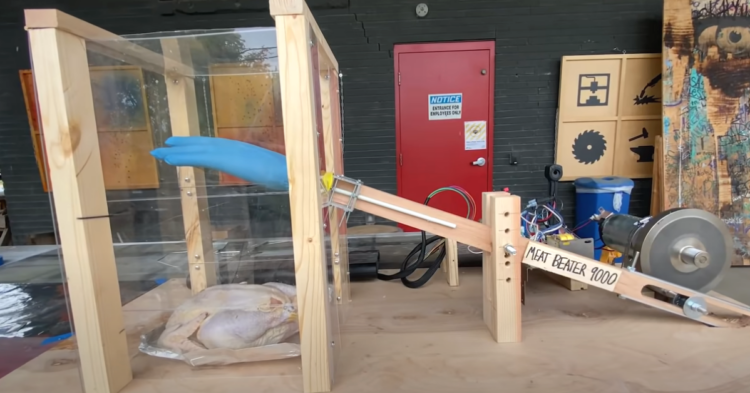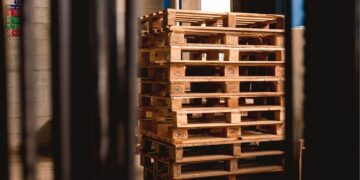About a year ago, the user MrWaterplant posted an innocent enough question to Reddit . He (presumably) wanted to know how hard you would need to slap a chicken to cook it. However, the various postulated answers would obliterate the chicken making the answer moot. Over time, the question evolved into how many times would you have to slap a chicken to cook it? Louis Weisz took it upon himself to answer this question on his YouTube channel.
How is movement energy transferred to heat?

You will notice that chicken jiggles when a lot when slapped. This is because the tissue has some elasticity. So, you can think of it a bit like a spring . When the chicken is slapped, it compresses and the movement energy is transferred to the chicken in the form of potential energy or heat.
After it is slapped, the chicken will spring back out using some of the stored energy in the process. But if the chicken is hit harder than the energy it takes to bounce back, it will have extra potential energy (or heat), which will raise its temperature.
Weisz’s biggest hurdle in his quest to slap-cook a chicken was the loss of heat.
In the YouTube experiment, the temperature of the chicken did not continue to increase with each slap. The problem is that between each slap, the chicken had time to cool down. Much of the gained heat radiated out into the environment. Weisz explains in the video that he was fighting Newton’s law of cooling. The larger the gap between an object and the surrounding temperature, the easier it is for the object to radiate energy. So, really hot objects will lose heat faster than less hot objects.
They missed some science in this experiment.

The goal of the experiment was to cook the chicken. Most attempts to answer the question defined this as reaching an internal temperature of about 165°F. Most likely this temperature was chosen because the FDA lists it as the safe temperature for chicken.
However, these temperature guidelines are a simplification of cooking science. Cooking is a combination of both heat and time. You can cook foods safely to lower temperatures if they are cooked longer. Weisz was able to get the chicken up to just above 120°F when he raised that ambient temperature. If he focused on maintaining that temperature instead of raising it, he could potentially cook the chicken. But honestly, since he was already raising the ambient temperature, this is cheating anyway.
Ultimately this is a waste of food.

The highest temperature that was reached without any other sources of heat was only around 80°F, which is far too low for any type of cooking. And in each experiment, the chicken was destroyed to the point that it would not be consumed anyway. So, it is probably time to put this question to rest and spare the lives of chickens. Perhaps we can turn our efforts to scrambling eggs with kinetic energy, or preferably something less wasteful.
















































